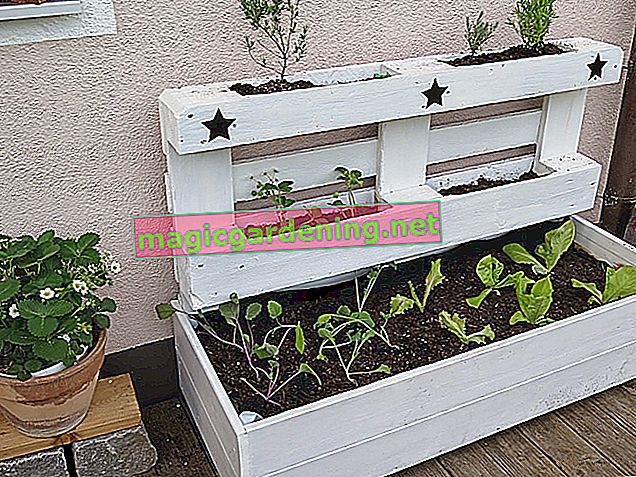
Preferred in a sunny location
All carnation species need a sunny to full sun place with well-drained, moderately moist and neutral to slightly alkaline soil - with one exception: The heather carnation (Dianthus deltoides) is the only species that prefers slightly acidic soil. You can mix the right substrate yourself with sand, potting soil and some clay granulate, whereby the latter is to be filled primarily as the first layer on the bottom of the pot. The clay granules (you can also use potsherds or similar) should lead excess water out of the pot and thus ensure good drainage.
also read
- Many carnations have a long flowering period
- Planting Carnations Properly - How To Proceed For A Gorgeous Bloom
- Plant and care for carnations
Properly care for the cloves in the pot
In general, drainage is immensely important, because carnations love dryness and must never be too moist. Especially wet winters are fatal for the plant, because in these it often develops waterlogging and thus rotting roots. Apart from that, carnations are very easy to care for, because you should not fertilize the usually one to two year old plants. In principle, pruning is not necessary either, unless you want to encourage the carnations to flower again. Apart from their sensitivity to moisture, carnations are considered to be very hardy and frost-hardy.
Species particularly suitable for the pot
The rather low-growing species, such as the cushion-forming whitefly carnations (Dianthus gratianopolitanus), feather carnations (Dianthus plumarius) or sand carnations (Dianthus arenarius), come much easier over the winter. So-called hanging carnations, which are usually part of the Dianthus caryophyllus, the garden or noble carnation, are also available in stores for balcony boxes.
Tips
Carnations are wonderful cut flowers that can be kept in the vase for a long time. You can also extend the shelf life by changing the water in the vase every two days. If possible, only cut stems slightly - but not completely! - opened flower buds.








